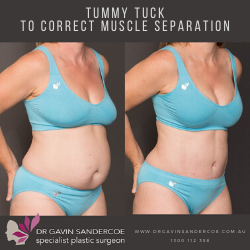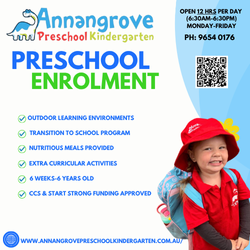As a parent of a first walker it can be confusing to know when to put shoes on your child. Our resident kids’ shoes expert and mum of three provides some advice for new mums!
Our feet are very complex pieces of engineering. They walk, climb, dance, run, skip, jump, or stand for many hours a day. In an average life-time they walk the equivalent of a journey to the moon!
A few feet facts
There are 28 bones, 112 ligaments and 20 muscles (plus nerves, blood vessels and skin) in EACH foot and takes up to 18 years to fully develop. At six months the foot comprises mostly of cartilage and can be deformed by an ill-fitting sock or all-in-one suit!
At two years of age, bone structure is developing, but there are still large gaps between the bones. By eight years the second part of the phalangeal (toes) and metatarsal (mid foot) bones can be clearly seen. These will take up to a further ten years to fuse together. Ill-fitting shoes can easily affect this progress. As an adult, bones are now fully formed with only small gaps between them. Although damage can still occur, the foot is more resilient.
Feet carry our whole body weight plus any extras such as our clothes, shopping, babies, baskets full of wet laundry and dozens of other things. For such a small part of us to support this weight AND more around wherever we wish to go, requires great strength. In fact, during the act of walking, the heel strikes the ground with a force equal to twice the body weight and remember the average pair of feet takes 10,000 steps a day, and flexes on average 7,000 times daily.
Shoes are one of the most important investments to the health, growth and development of your child.
When does a child start to walk?
The average age is between 12 and 15 months. Less than 60% of children are walking at a year old and only 3% are walking alone at 9 months. Never ‘push’ your child to walk early. Let them learn to walk in their own time. Crawling for a long as possible is best for your child. Crawling develops near vision which is important for later skills such as reading and writing. It also increases breathing capacity which is fundamental in the early phases of speech.
What should you look for in a pair of first shoes?
The first thing to look for isn’t the shoes themselves. You must look for a fully trained and qualified fitter that you can trust. Someone that can answer all your questions honestly and that hopefully, you can build a relationship with for years to come as you’ll be buying LOTS of shoes for your little one over their childhood. Ask around. Friends with older children will give you their recommendations. Do your homework. Once you’ve selected a fitter in a store then it’s time to look for shoes.
But seriously, what should you look for?!
When you go in to purchase shoes, don’t have a preconceived idea about exactly what you want. Have a vague idea but be totally open to the fitter showing you options that are suitable for your child. A fully qualified and experienced fitter will know their stock intimately and will be able to show you what will fit your child best.
There are several different styles of shoes available for your child. Crib Shoes are soft leather or fabric shoes designed for “dressing up” your baby. These are the cutesy feel-good looking shoes. As long as they are a bit big whilst your newborn is not even weight bearing, you’ll be fine to fit those yourself.
Prewalkers are soft leather (or sometimes fabric) uppers with rubber soles usually with the sole wrapping around the toes for protection when crawling. These types of shoes are designed for children beginning to weight bare, walking around furniture and crawling. These shoes are best to be fitted by a professional fitter as the rubber toe can create a false “reading” when fitting and your child can end up with shoes that are fitted incorrectly.
First shoes are made with firm leather uppers and firm rubber soles. Quality ones will also be available in half sizes and different width fittings. These types of shoes are designed for children mostly walking (often waddling penguin like) with minimal crawling. These types of shoes should always be fitted and checked at regular intervals by a professional fitter. Supportive, firm, well-fitting high quality shoes should always be worn once a child is walking unaided and always must be fitted professionally, as an incorrectly fitted shoe can do detrimental damage to a young foot.
When should you put shoes on your child?
You can put a pair of shoes on your child whenever you are ready. There is no hard and fast rule about the number of steps or the length of time that you should wait until you purchase a pair of shoes for your child. Go with your gut instinct – it’s when you are ready and want your child to wear shoes. The reason for you purchasing a first pair of shoes for your child is for protection from temperature (cold and hot ground) and texture (grass, tiles, concrete, carpet, floorboards).
Small children are very tactile, and can be discouraged from walking due to the changes in texture under bare feet. By having fitted shoes on their feet, it takes away the differences in the textures and gives the first walker confidence to take their first steps.
As soon as your child walks unaided regularly and confidently and crawls less and less then they can be fitted for a pair of first shoes.
Winter first walkers usually end up with shoes much earlier because socks don’t stay on and slippers fall off (or are not made small enough) and they have cold feet on the tiles and floorboards that are found in our houses today. Whereas summer first walkers often get their shoes much later due to the warmer temperatures. Summer temperatures can make the ground extremely hot, and little toddlers don’t understand the “hopping” needed to stop feet from burning on the ground. Always be extra vigilant in extreme weather conditions as I have seen the burns that can occur on the soles of the feet.
How often should they wear their shoes?
As part of your dressing routine at home put shoes on your child. They need to wear their shoes when they are walking – and that is when they are at home or at the park – not when they are in the pram! Often when they are in the pram they are playing with their feet and that’s where they lose their shoes! Having said that it is also good for their feet to spend some time barefoot if possible too.
How long will their shoes last?
In the first year, your toddler will grow 1 size every 3-4 months so we always recommend having one well fitted pair of shoes – trash it to death, clean it up for good occasions and then throw it out and start again. It becomes very costly to dispose of shoes worn only a handful of times that a little one has simply grown out of.
It’s very easy to pick up a pair of shoes to match an outfit as you are browsing through Country Road, Seed, Target etc. When making a footwear purchase in fashion shoes, consider if the shoes REALLY fit or do they just tug at the heartstrings? Clothing stores are not footwear focused and rely on your emotions to make a purchase.
Remember, it’s not just their first pair that is important to have fitted correctly – EVERY PAIR of shoes is important for developing feet. You are investing in the health and future of your children with correctly fitted footwear for at least the next 15 years. You only get one chance to make sure that your child’s feet develop correctly and a bad fit now means bad feet later. It is possible to squeeze a child into a pair of shoes 2 sizes too small without realising it and research now shows that one out of every 3 children has a foot deformity due to unsuitable and incorrect footwear.
Jaythene is a Hills District Mum of 3 and knows kids’ shoes like the back of her hand. Her family has owned Sparks Shoes in Beecroft for generations and the store is a local institution. She has also written an article on looking after school shoes so they last as long as possible. Read it here.























